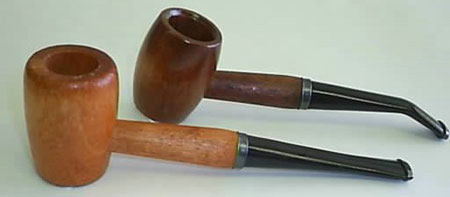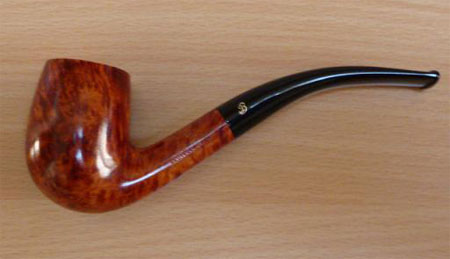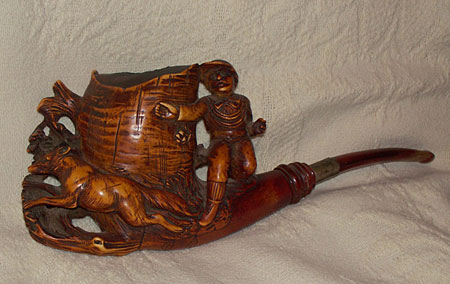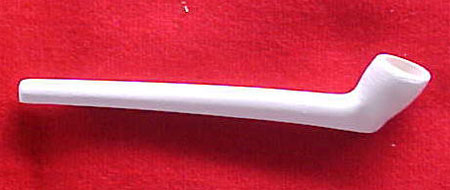Here’s a little something different for our readers. Instead of a pipe tobacco review, I’m putting together a few tutorial posts on getting started in the world of pipes. The first of them is on how to choose a pipe.
There are a variety of types of pipes, all of which with a variety of styles. Most pipes are categorized into Cobbs, Briars, Meershaum, and Clay.

Cobb pipes (photo above) are typically made with Corn Cobbs and have a very rustic country look. Stereotypes often associate corn cobb pipes with rednecks or hicks which, to say, can be true or false depending on who you’re talking with. Most Corn Cobb pipes have a wooden/plastic stem and also have paper filters which you may or may not take out, depending on your preference.

Briars are often made from Briar wood, hence the name. These come in a variety of shapes and are the most widely used type of pipe on the market. Briars often take a while to break in and allow a cake to form, but last for decades if taken care of properly. The biggest fear with briars is thier tendency to ghost*. Because of this, many pipe smokers have several pipes for each different type of pipe tobacco they smoke (more on the types of pipe tobacco in another post).
* Ghosting is the term used when a flavor and group of flavors become embedded within the wood of a Briar pipe and are released by smoking the pipe (caused by the heat expansion of the wood). This can often lead to a bad mix of flavors between the flavors caught in the wood and the natural flavors of the tobacco.

Meerschaum pipes are often the most expensive pipes in one’s collection. Often hand carved, these pipes are extremely decorative and should be considered a piece of art (not that all of your other pipes shouldn’t). Meerschaum pipes often turn colors after habitual use, which make them nice talking points between pipe smokers.

Clay pipes are made with, you guessed it, clay! These pipes come in many different shapes and styles, and tend to get a bit hot while smoking them.
For the beginners, I would suggest a Corn Cobb pipe. They are cheap ($3-$6), do not ghost, and have easy upkeep. Clay would be my second choice, but as their bowl gets fairly hot, it is hard to hold them. Briars have more upkeep, and new pipe smokers can damage their pipes if they do not know how to light thier pipes correctly. Meershaum pipes can be a bit expensive for the beginner, and tend to have a large amount of upkeep.
So there you go! Now go out there and get yourself a pipe! In the next installation, we will discuss filling (packing) your pipe and lighting it!
So, until then, I hope everyone has a Happy and Prosperous New Year!


@Chuck
Corn Cobbs often come with paper filters (look like long paper cylinders placed inside where the stem and bowl meet). There is a lot of debate around whether or not to leave the filter in or out (similar to the cello or no cello debate).
People who like filters often argue that that keep loose tobacco and “gurgle” (an accumulation of wetness formed at the bottom of the bowl due to smoking wet tobacco) from traveling through the stem and into your mouth. Others say that the filters provide too much resistance when smoking, causing the smoker to puff harder, smoking the tobacco too hott.
Both sides have good arguements, but its really up to the smoker and his preference. I usually take the filter out, as the resistance annoys me.
Hope this helped. Happy Piping!
Why or why not would you remove the paper filter from the corncob pipe?